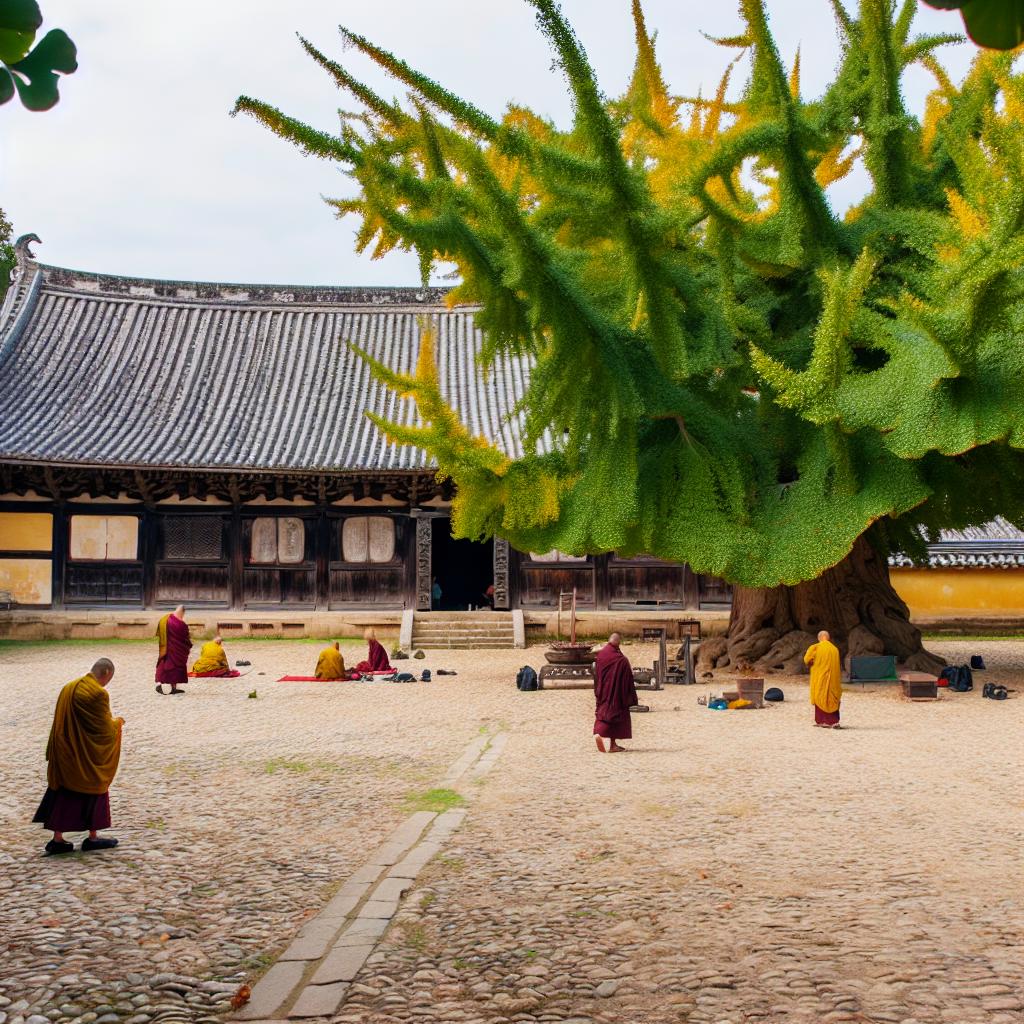The Significance of Ginkgo biloba in Buddhist Temples
The presence of Ginkgo biloba in Buddhist temples is a notable aspect of both the botanical and cultural landscapes in regions where Buddhism has historically flourished. This ancient tree species, often referred to as a “living fossil,” is deeply intertwined with the spiritual and historical fabric of many Buddhist communities.
Historical and Botanical Background
Ginkgo biloba is one of the oldest living tree species on Earth, with a lineage tracing back over 200 million years. Its unique fan-shaped leaves and resilience to various environmental conditions have made it a symbol of longevity and endurance. These qualities are especially revered in Buddhist philosophy, which often emphasizes the importance of permanence amidst the impermanence of life.
Historically, Ginkgo biloba has been cultivated in China for thousands of years and eventually spread to other parts of Asia, including Japan and Korea. The tree’s resilience and adaptability have contributed to its survival through numerous climatic shifts, natural disasters, and human interference, making it a living piece of natural history. The ancient origins of the Ginkgo tree also parallel the ancient roots of Buddhism, creating a harmonious integration between natural world history and spiritual tradition.
Cultural and Spiritual Symbolism
In Buddhist temples, the Ginkgo tree represents more than botanical value; it is a symbol of peace, hope, and enlightenment. Its remarkable ability to survive adverse conditions, demonstrated by its persistence even after the atomic bombing of Hiroshima, underscores its role as a symbol of resilience and rebirth. This quality resonates deeply with the teachings of Buddhism, which focus on overcoming suffering and pursuing personal growth through meditation and inner peace.
Ginkgo trees also hold significance in stories and myths within Buddhist culture. Often seen as a tree of wisdom, its leaves are believed to bring clarity of thought and spiritual insight. The tree’s presence in a religious setting is intended to remind practitioners and visitors of the Buddha’s teachings on enduring hardship and fostering spiritual growth.
Placement in Temple Grounds
The strategic planting of Ginkgo trees within temple grounds also enhances their spiritual significance. Often positioned near meditation halls or along temple approach paths, these trees create a serene environment conducive to contemplation and reflection. The presence of a Ginkgo tree in these settings serves as an ambient tool for meditation, with its leaves whispering in the wind, inviting practitioners to attune themselves to the present moment.
In autumn, when the leaves transition from vibrant green to brilliant gold, the Ginkgo’s transformation serves as a visual metaphor for spiritual liberation and enlightenment. This seasonal change is celebrated in many cultures, marking it as a time for reflection and meditation on the cyclical nature of life and the potential for spiritual awakening.
Practical Uses
Apart from its symbolic significance, the leaves and seeds of Ginkgo biloba have practical uses, particularly in traditional medicine and cuisine in Asia. Various parts of the tree have been used in treating ailments ranging from memory enhancement to respiratory disorders. This medicinal application further cements the Ginkgo’s significance in communities where Buddhist temples serve not only as spiritual havens but also as centers of cultural and social life.
In culinary applications, Ginkgo seeds, sometimes referred to as “nuts,” are used in various dishes and are considered a delicacy in some Asian cultures. The edible seeds are often included in festive meals and have been associated with good fortune and health. This practical use within the kitchen parallels the tree’s spiritual essence, deeply integrating the tree into the everyday lives of people.
Enduring Legacy
The role of Ginkgo biloba in Buddhist temples reflects the tree’s enduring legacy in cultural, spiritual, and ecological contexts. It stands as a testament to the intertwined nature of human belief systems and the natural world. Through its presence, the Ginkgo acts as a silent witness to centuries of spiritual practice and ecological conservation. The placement of Ginkgo trees in temple grounds signifies an understanding and appreciation of nature’s role within religious and cultural practices.
The enduring legacy of the Ginkgo tree is further captured through its resilience and ability to bridge the past and present, symbolizing continuity and hope for the future. In urban environments, it represents a connection to nature and a reminder of the importance of preserving ecological heritage amidst rapid modern development.
For more information on the cultural significance of Ginkgo biloba, one could explore academic journals or books dedicated to botanical studies and religious practices. These resources offer deeper insight into the tree’s historical journey and its symbolic and practical significance across various cultures and spiritual traditions.

